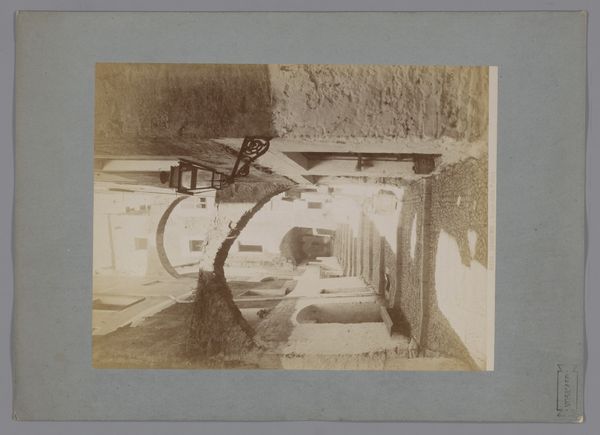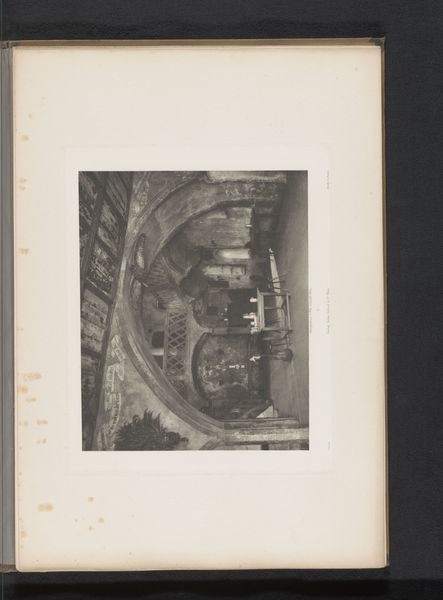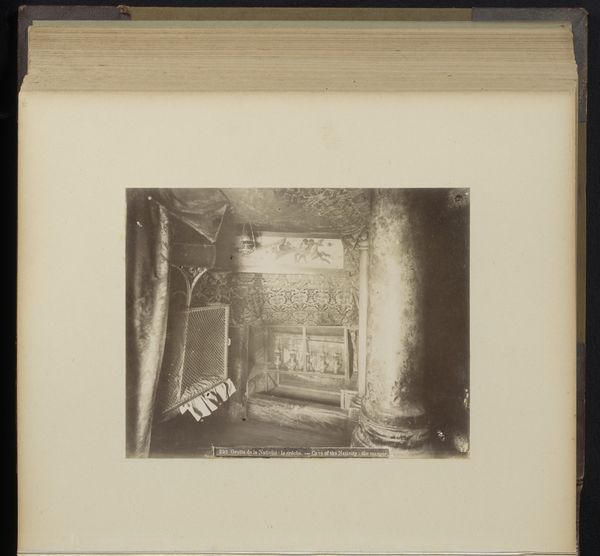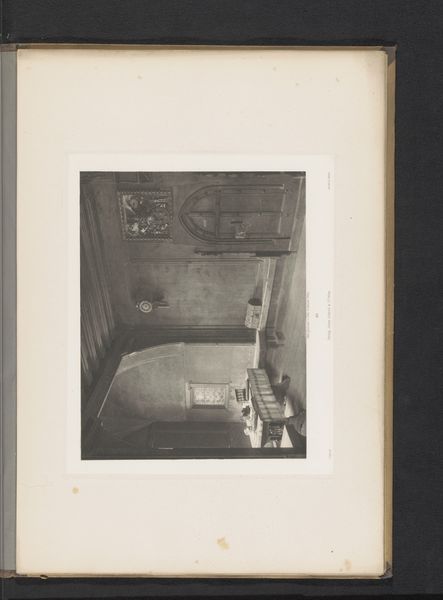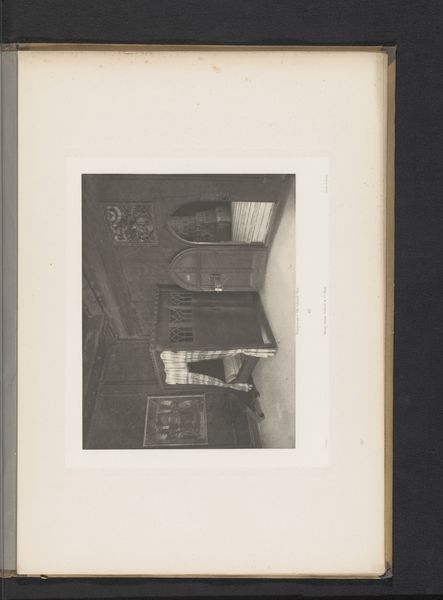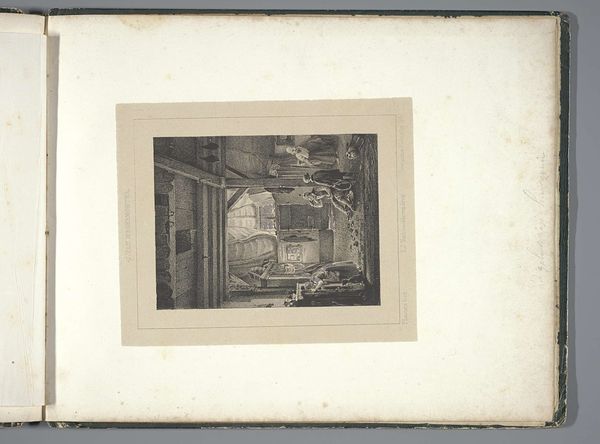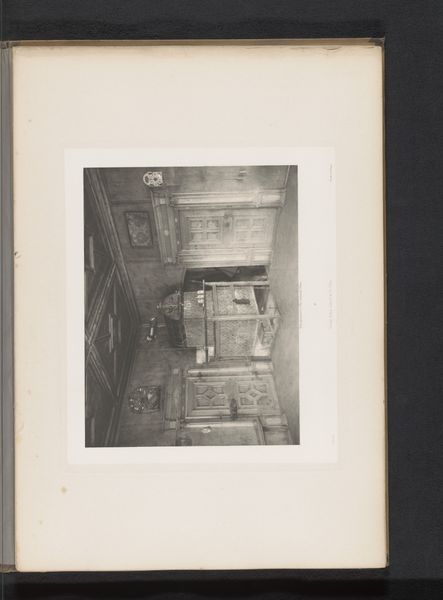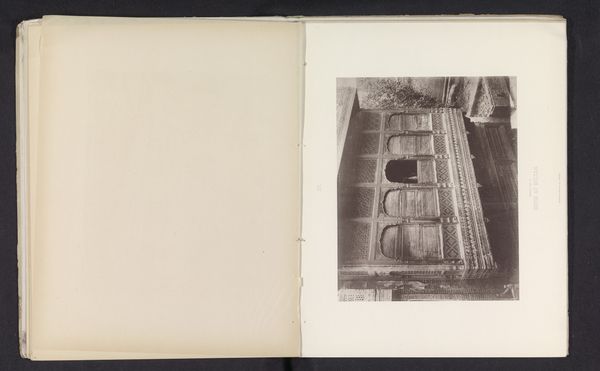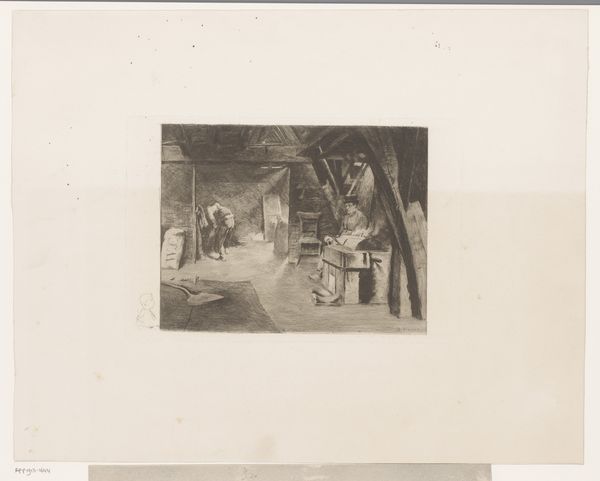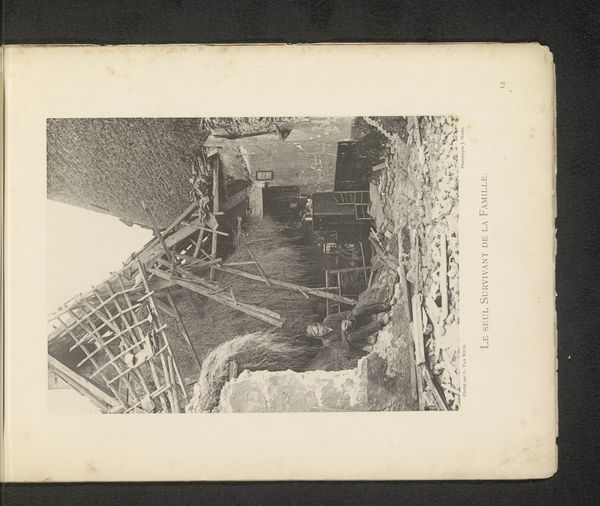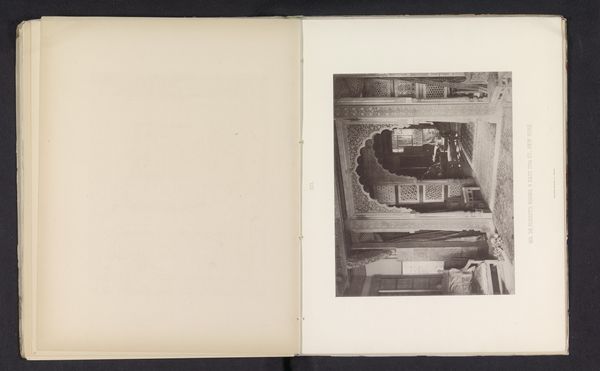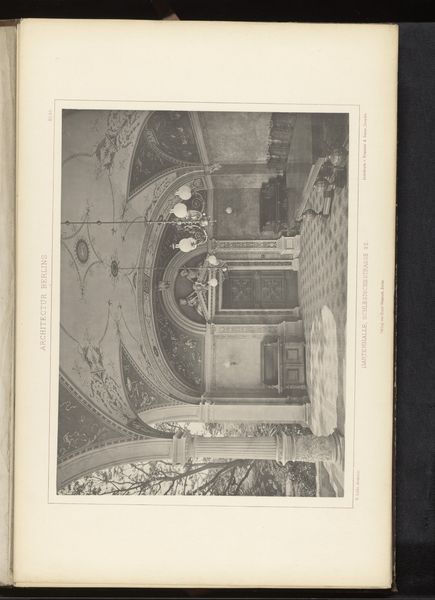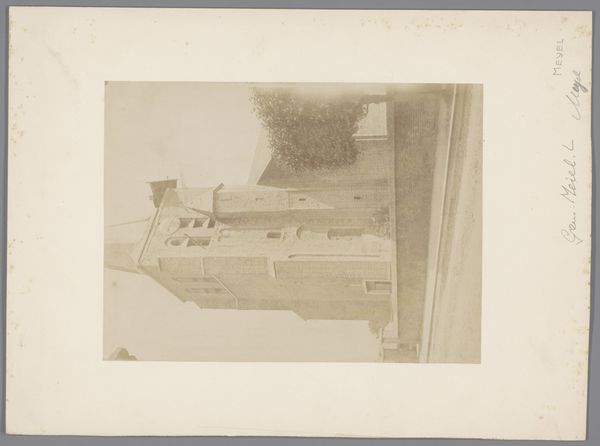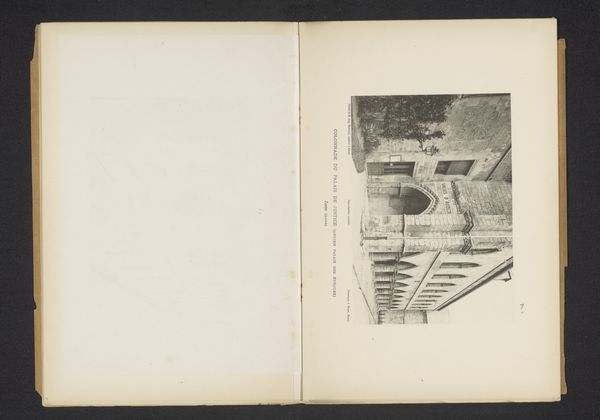![Coptisch klooster, Jeruzalem, Palestina ["268 IX Station, couvent Cophte. - XI Station. Coptic convent"] by Maison Bonfils](/_next/image?url=https%3A%2F%2Fd2w8kbdekdi1gv.cloudfront.net%2FeyJidWNrZXQiOiAiYXJ0ZXJhLWltYWdlcy1idWNrZXQiLCAia2V5IjogImFydHdvcmtzLzdlYTkwYWYxLTI5ODgtNGIxZC05ZjkwLWI3Y2I5NTcyMDYzOS83ZWE5MGFmMS0yOTg4LTRiMWQtOWY5MC1iN2NiOTU3MjA2MzlfZnVsbC5qcGciLCAiZWRpdHMiOiB7InJlc2l6ZSI6IHsid2lkdGgiOiAxOTIwLCAiaGVpZ2h0IjogMTkyMCwgImZpdCI6ICJpbnNpZGUifX19&w=3840&q=75)
Coptisch klooster, Jeruzalem, Palestina ["268 IX Station, couvent Cophte. - XI Station. Coptic convent"] c. 1850 - 1900
0:00
0:00
print, photography, albumen-print, architecture
# print
#
landscape
#
photography
#
ancient-mediterranean
#
orientalism
#
albumen-print
#
architecture
Dimensions: height 278 mm, width 220 mm, height 357 mm, width 450 mm
Copyright: Rijks Museum: Open Domain
Curator: Looking at this photograph, I am immediately struck by the stark contrast between the sun-drenched courtyard and the deep shadows of the doorway. It almost feels like a stage set, meticulously arranged. Editor: Indeed. What we are viewing here is an albumen print by Maison Bonfils, taken sometime between 1850 and 1900. The title is "Coptisch klooster, Jeruzalem, Palestina," or "Coptic Monastery, Jerusalem, Palestine." The print captures the architecture of the Coptic Convent, offering a view onto its textural facade. Curator: The rough texture of the stone pavement and the aged walls—they evoke a real sense of history and the passage of time. It invites the eye to follow that diagonal line to the entrance to decode some kind of meaning. Editor: Consider the political and social implications of such images circulating in the late 19th century. Photography of the Middle East reinforced Orientalist tropes, framing the region as timeless, exotic, and accessible for Western consumption. Curator: True, there’s definitely a visual consumption at play. The strong diagonal of the courtyard and the way it directs the viewer's eye toward the single figure positioned just inside the doorway create a focal point—almost theatrical. It begs questions of surveillance. Editor: Yes, and think about who would have been acquiring these images. Wealthy tourists, scholars, and institutions, solidifying a certain gaze and narrative around this region and its people. The formal composition subtly reinforces power dynamics. Curator: I hadn't considered that. From a purely visual perspective, I am captivated by the delicate rendering of light and shadow across the stonework. The interplay creates an almost palpable sense of depth. Editor: Absolutely, though that delicate rendering is serving particular ideologies. This image does more than document a building; it participates in a much larger, fraught discourse about culture, religion, and representation. Curator: It's amazing how a seemingly simple photograph can hold such layered meanings when you really begin to pull it apart. The beauty masks the politics so efficiently. Editor: Precisely. It reminds us that appreciating art also means being critical and historically informed.
Comments
No comments
Be the first to comment and join the conversation on the ultimate creative platform.
